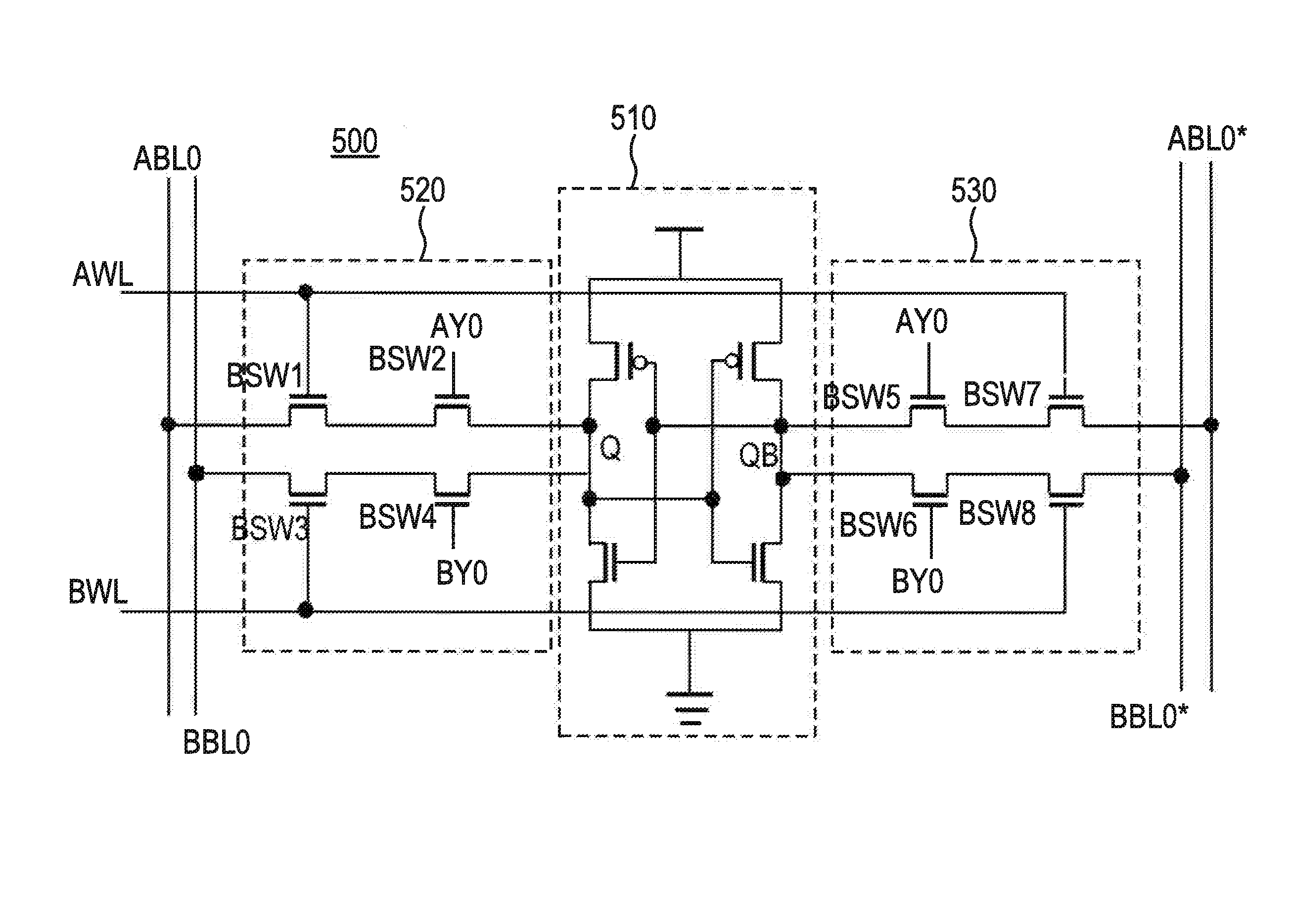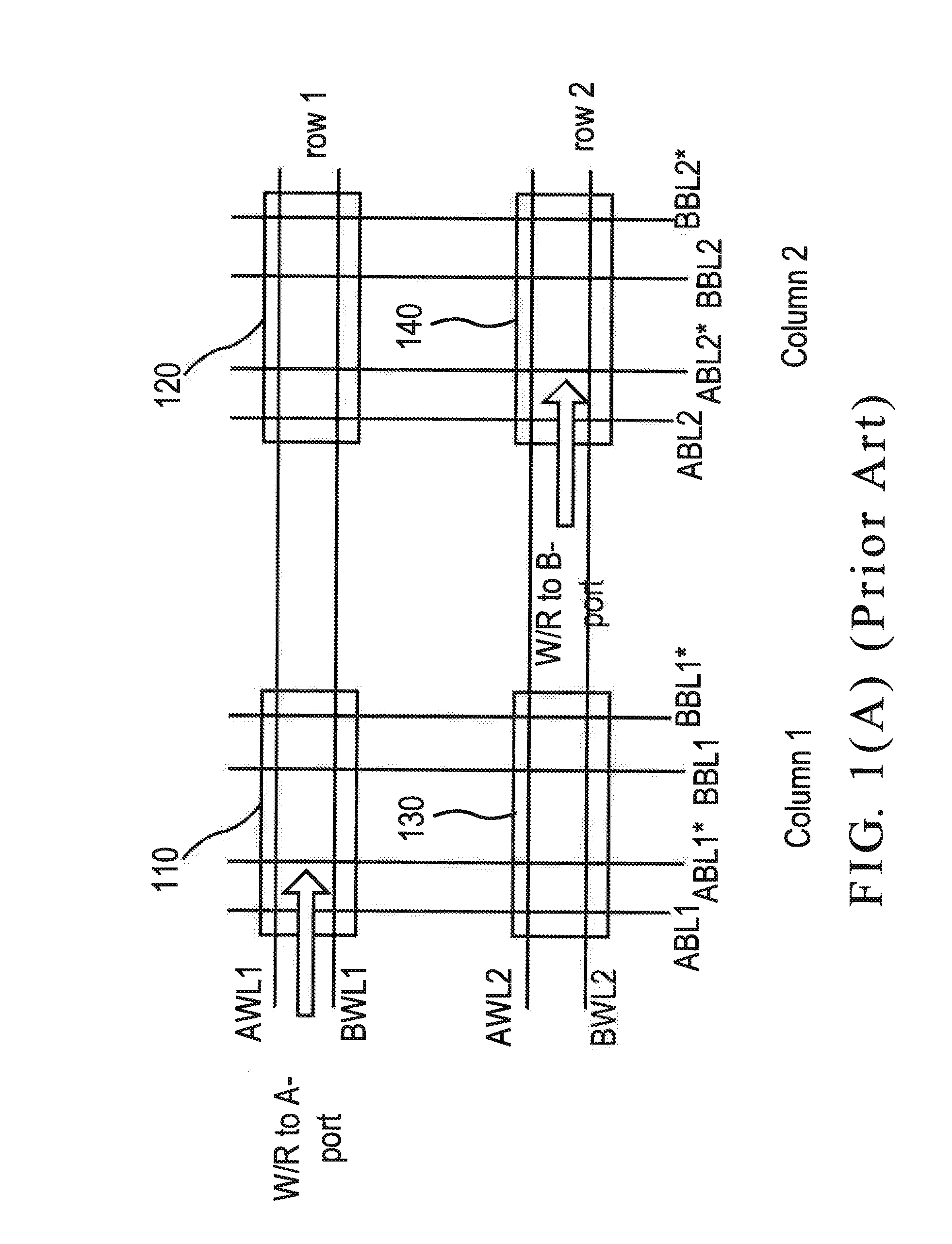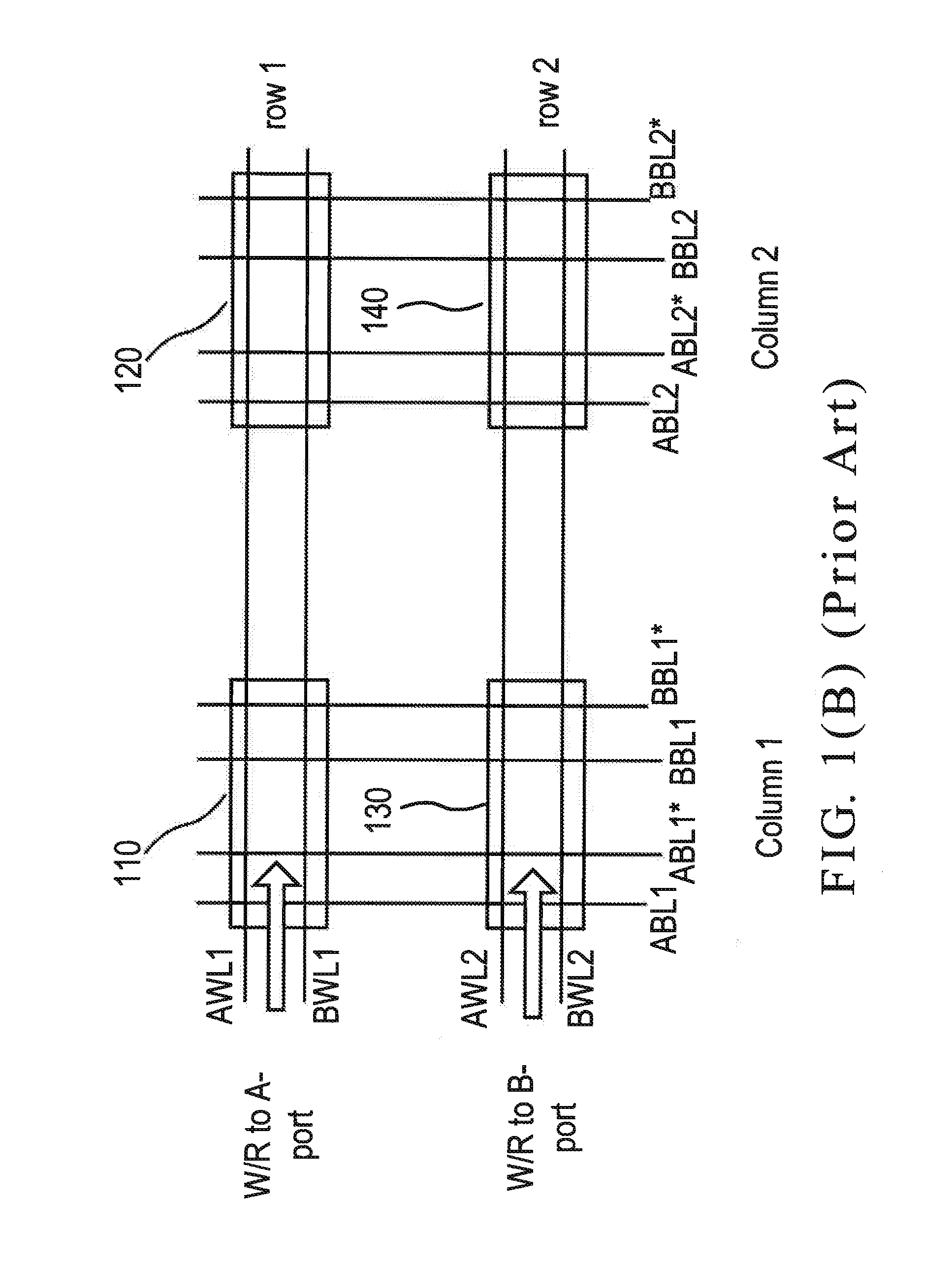Ten-transistor dual-port SRAM with shared bit-line architecture
a bit-line architecture and ten-transistor technology, applied in static storage, information storage, digital storage, etc., can solve the problems of reducing the entire access efficiency, reducing the read/write power consumption, and affecting the stability of the ten-transistor sram, so as to reduce the total number of bit lines, increase the static noise margin, and reduce the effect of read/write power consumption
- Summary
- Abstract
- Description
- Claims
- Application Information
AI Technical Summary
Benefits of technology
Problems solved by technology
Method used
Image
Examples
Embodiment Construction
[0025]FIG. 4 is a schematic diagram of a ten-transistor (10T) dual-port SRAM with shared bit-line architecture according to the invention. The 10T dual-port SRAM includes a first memory cell 410, a second memory cell 420, and a third memory cell 430.
[0026]The first memory cell 410 has a first storage unit 411, a first switch set 413, and a second switch set 415. The first switch set 413 is connected to a first A-port bit line ABL0, a first B-port bit line BBL0, and the first storage unit 411. The second switch set 415 is coupled to a complement first A-port bit line ABL0* and a complement first B-port bit line BBL0*, and is connected to the first storage unit 411.
[0027]The second memory cell 420 has a structure as same as the first memory cell 410. Namely, the second memory cell 420 has a second storage unit 421, a third switch set 423, and a fourth switch set 425. The third switch set 423 is connected to the complement first A-port bit line ABL0*, the complement first B-port bit li...
PUM
 Login to View More
Login to View More Abstract
Description
Claims
Application Information
 Login to View More
Login to View More - R&D
- Intellectual Property
- Life Sciences
- Materials
- Tech Scout
- Unparalleled Data Quality
- Higher Quality Content
- 60% Fewer Hallucinations
Browse by: Latest US Patents, China's latest patents, Technical Efficacy Thesaurus, Application Domain, Technology Topic, Popular Technical Reports.
© 2025 PatSnap. All rights reserved.Legal|Privacy policy|Modern Slavery Act Transparency Statement|Sitemap|About US| Contact US: help@patsnap.com



